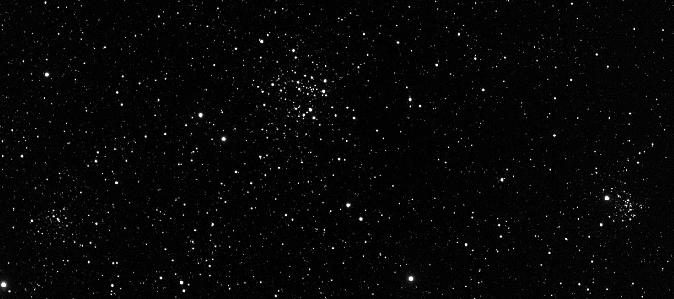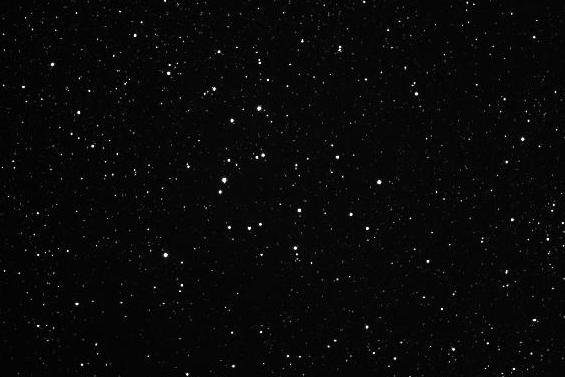Gathering Up a Few Open Clusters
Jack Kramer
Let's agree that there are a few interesting open clusters - the Wild Duck Cluster (M11) and the Double Cluster in Perseus immediately come to mind. But for the most part, open clusters don't elicit as much interest as a galaxy, nebula, or globular cluster.
Open ("galactic") clusters are composed of generally young, blue-white stars that astronomers have found to be related to one another. By this we mean that they are at the same distance from us and share the same proper motion through space, but more importantly, they are physically near to one another and are gravitationally bound. Implicitly, they also share the same birthright - they formed out of the same cloud of interstellar gas. An obvious example is the Trapezium that we see still embedded within the gas cloud of the Orion Nebula. Once in awhile, a much older star appears as a part of a cluster that should have only young stars. Can you see the older, reddish star in the Double Cluster?
That doesn't mean that every group of stars of similar magnitude is a true open cluster. The stars may appear near to each other as we view them from Earth, but they may be at substantially different distances from each other and totally unrelated. Such groupings are referred-to as "asterisms".
However, some very familiar star patterns visible to the naked eye are true open clusters. One example is the belt stars in Orion, designated as the cluster Collinder 70 (Cr 70). Another example is Collinder 285, known as the Ursa Major Moving Cluster, but more familiarly known to everyone as the Big Dipper.
Can you find three clusters in the following image? Many open clusters are so loose or composed of such faint stars that they need a dark sky to be seen at all.

The preceding image includes (left to right) NGC 659, 663, and 654 in Cassiopeia. My observing notes (10-inch scope) indicate that 659 and 654 appeared loose and inconspicuous. NGC 663, on the other hand, is rich and concentrated toward the center. An orange-colored star lies at the edge of the cluster and there are two double stars within the cluster. Obviously, NGC 663 is worth a look, but the other two may take some careful observing just to locate.
This brings up another characteristic of open clusters. One of the problems when you go beyond the showpieces is that many open clusters appear only as a few bright stars. If the related grouping of stars happens to lie in a rich area of the sky, it may be almost impossible to determine which stars make up the cluster and which are background or foreground stars. A case in point is M39 in Cygnus, which is centered in the following image.

The brighter stars in the image belong to M39. Beyond taking credit for seeing this cluster on your way to completing the Messier list, it's a ho-hum sort of object. Why did Messier bother listing this, yet completely ignore the Double Cluster in Perseus? But that's another story...
(The images in this article were taken with a Takahashi 4-inch refractor and ST-8E CCD camera by Ron Wodaski, an amateur astronomer in Washington state and are used with his permission. To see more of Ron's work, visit his web site at www.wodaski.com)
Published in the January 2001 issue of the NightTimes




